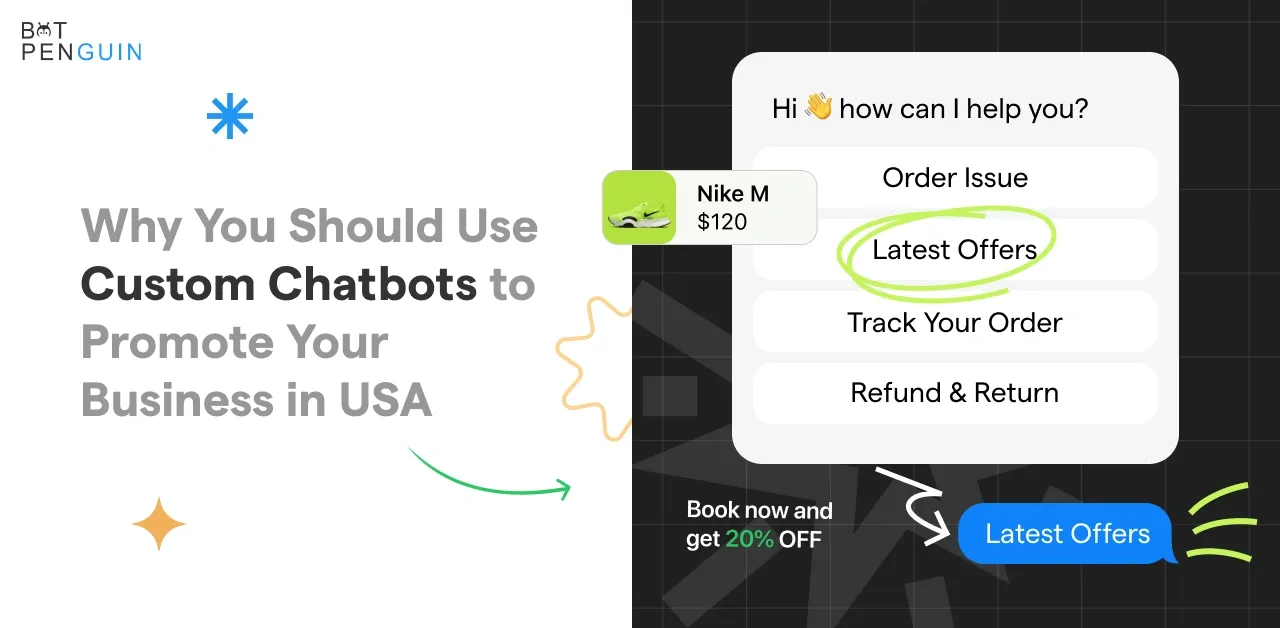Improve your ChatGPT experience by tackling common difficulties! This guide focuses on the skill of prompt engineering, aiding you in creating effective prompts that overcome challenges when using this advanced language model.
Learn how to manage ChatGPT's constraints, such as producing irrelevant or overly broad responses. Discover how to formulate prompts that direct the model towards precise, contextually appropriate, and engaging replies.
Grasp the subtleties of single-turn and multi-turn prompts to maintain a fluid, interactive, and dynamic conversation. Identify obstacles, such as ambiguous questions or unclear directions, that can impede the quality of your interaction and learn how to avoid them.
Acquire best practices for creating clear, specific, and impartial prompts. Explore methods to provide adequate context, employ examples, and foresee potential problems to ensure ChatGPT meets your expectations.
Venture into the realm of open-ended prompts to stimulate creativity and yield a wider array of responses. However, learn to balance openness and specificity to prevent unclear or off-topic replies.
Discover the influence of system, user, and assistant instructions on ChatGPT's behavior and conversation personalization. Understand how to apply these instructions effectively to address challenges and enhance your interaction.
Enhance your ChatGPT experience by confronting these difficulties directly. Read on to make the most of this advanced technology and significantly improve your interactions with ChatGPT.
What is prompt engineering?
Prompt engineering is the process of designing and optimizing input prompts for artificial intelligence models, particularly language models like ChatGPT, to generate desired outputs.
It involves crafting clear, specific, and contextually relevant prompts that guide the AI model to produce accurate, engaging, and useful responses.
Prompt engineering can help improve the performance of AI models, enable better control over their behavior, and create more natural and interactive user experiences.
Importance of ChatGPT Prompt Engineering
ChatGPT Prompt engineering ai is essential for optimizing the performance of ChatGPT.
You can guide the model to produce accurate and contextually relevant responses by carefully designing prompts.
Prompt engineering ai enables you to control the tone, style, and overall behavior of ChatGPT, ensuring an engaging and user-friendly experience.
Next we will cover basic of ChatGPT prompts.
Understanding ChatGPT Prompts
To effectively engineer prompts for ChatGPT, it's important to understand how prompts work and the various types available.
Let's dive into the details.
How do Prompts work in ChatGPT?
In ChatGPT, prompts initiate conversations and guide the model's responses. A prompt is a message or a series of messages, typically text, provided to ChatGPT.
These prompts can be as simple as a single question or a multi-turn dialogue.
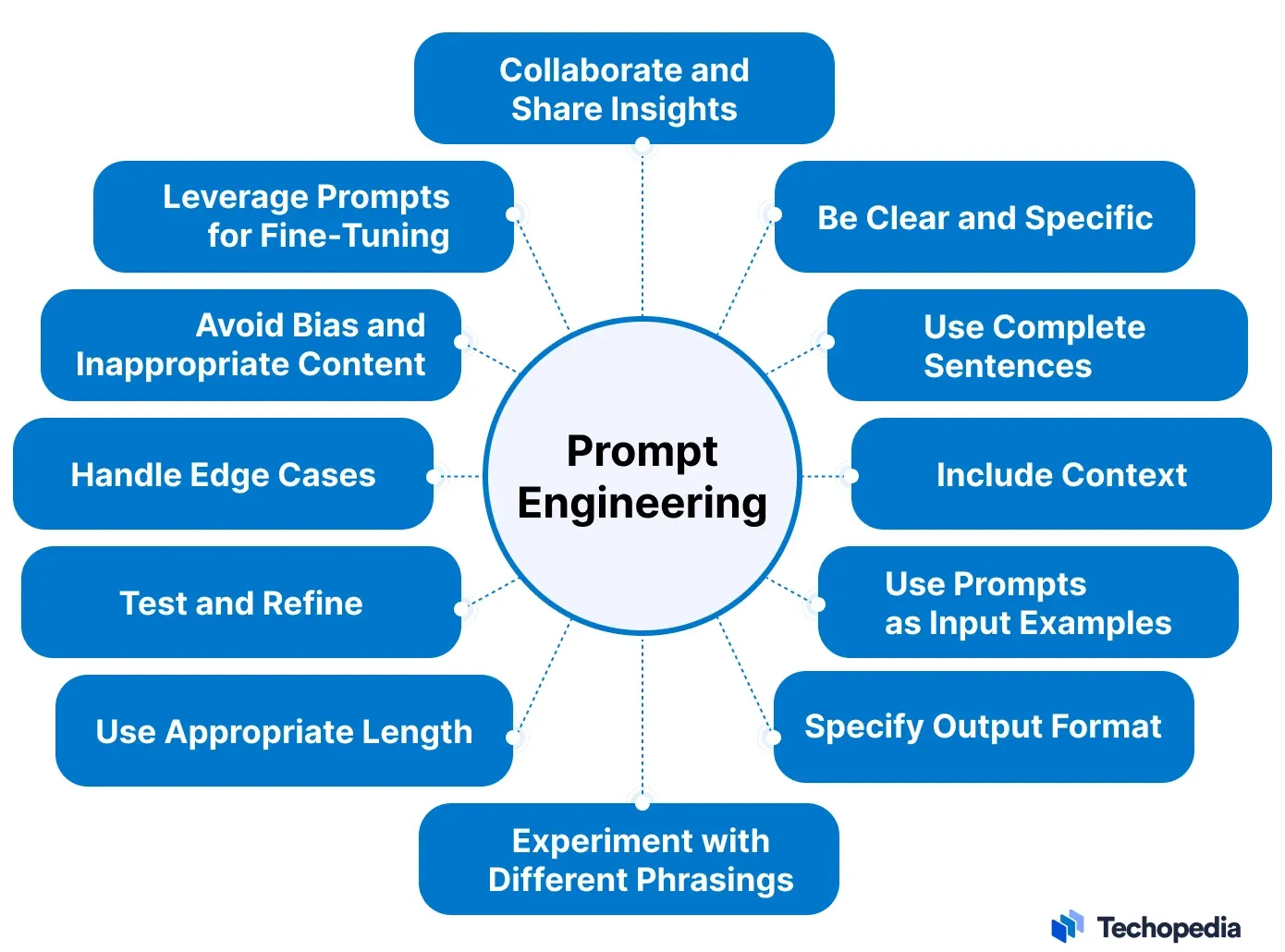
Different Types of Prompts
When working with ChatGPT, you can use different types of prompts depending on your specific requirements.
Here are two common types:
Single-turn Prompts
Single-turn prompts involve a single message or question.
For example,
- "What's the capital of France?"
- "Translate 'Hello' to Spanish."
- "Provide a brief summary of the book '1984' by George Orwell."
Single-turn prompts are helpful for quick interactions and straightforward queries.
Multi-turn Prompts
Multi-turn prompts involve messages that simulate a conversation between a user and ChatGPT.
This allows for more interactive and contextual conversations.
For example,
- User: "I'm looking for a good Italian restaurant in New York City."
- Assistant: "Sure, I found a popular Italian restaurant called 'La Lanterna di Vittorio' in NYC. Would you like to know more about it?"
- User: "Yes, please tell me about their menu and pricing."
Multi-turn prompts enable more dynamic and engaging interactions with ChatGPT.
Next, we will cover how to craft effective prompts.
Suggested Reading:
Crafting Effective Prompts
Effective prompts are crucial for guiding ChatGPT to generate accurate and engaging responses.
Let's explore some best practices for ChatGPT prompt engineering ai.
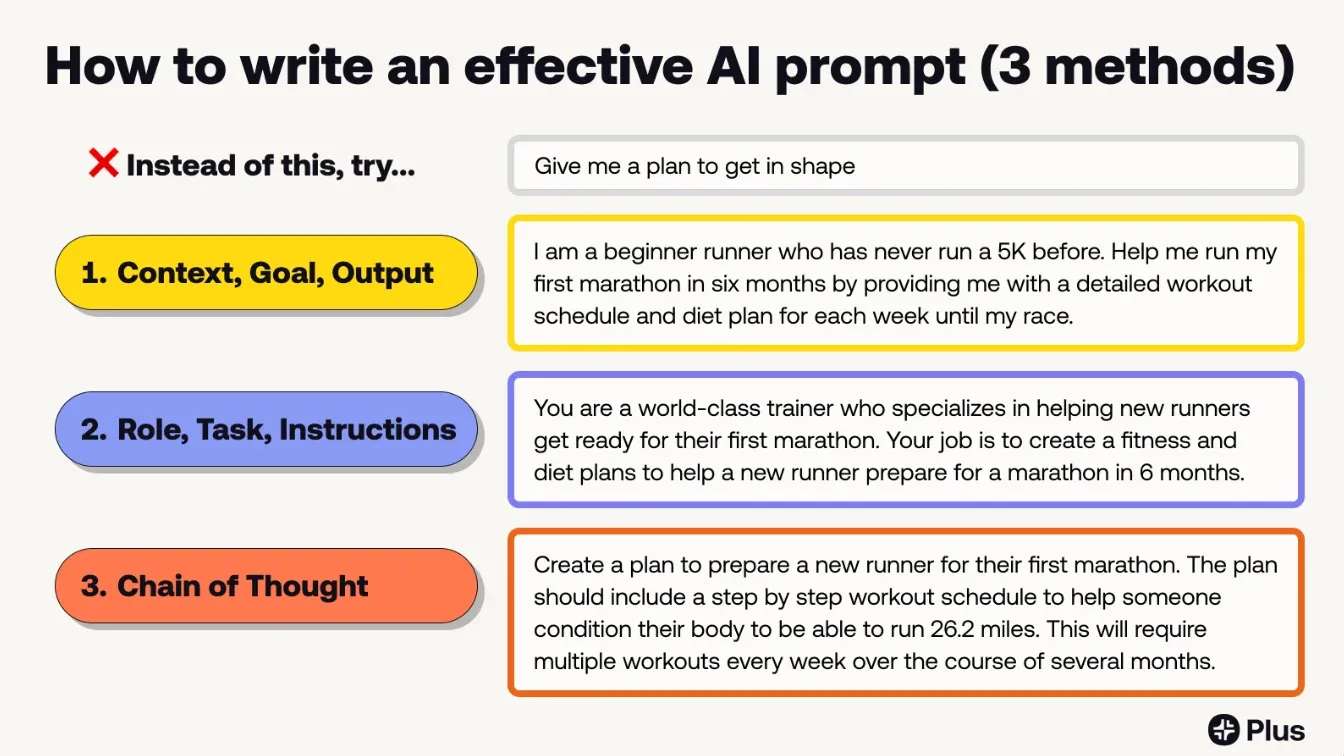
Be Specific and Clear
When designing prompts, it's essential to be specific and transparent in your instructions or questions.
Ambiguous or vague prompts can lead to unwanted or irrelevant responses. Clearly state what you expect ChatGPT to provide as a response to ensure accurate and relevant outputs.
For example,
- "What are the symptoms of the common cold?"
- "List the top 5 largest countries by area."
Provide Context
Context is key to ChatGPT prompt engineering AI. By providing relevant background information or setting the scene, you can guide ChatGPT to generate responses that align with the context.
This helps ChatGPT understand the user's intent and produce more accurate and contextually appropriate replies.
For example,
- "Imagine you are a tour guide in Rome. Describe the Colosseum and its historical significance."
- "You are a personal fitness trainer. Recommend a 30-minute workout for a beginner."
Use Examples
Using examples in your prompts can help ChatGPT understand the desired response format and style with Prompt Engineering.
By providing clear examples of the expected output, you can guide ChatGPT to generate responses that meet your requirements.
Examples act as guidelines for the model and enhance its ability to mimic specific behaviors.
For example,
- "Write a short story in the style of Edgar Allan Poe, starting with 'Once upon a midnight dreary...'."
- "Generate a list of 10 creative marketing ideas for a new bakery."
Avoid Misleading or Biased Prompts
When crafting prompts, it's crucial to avoid misleading or biased language.
Biased prompts can lead ChatGPT to generate biased responses, harming user experience and perpetuating unfair stereotypes.
Be mindful of your language and ensure your prompts are inclusive, neutral, and unbiased.
Identifying Potential Pitfalls
While creating prompts, it's important to anticipate potential pitfalls and challenges.
Consider potential sources of confusion or misinterpretation and clarify them within the prompt.
By addressing possible pitfalls proactively, you can guide ChatGPT to produce accurate and helpful responses.
Ensuring Neutrality and Fairness
ChatGPT Prompt engineering ai should prioritize neutrality and fairness. Avoid favoring or promoting any particular viewpoint or bias in your prompts.
Strive to offer equal opportunities for diverse perspectives and ensure that ChatGPT is not programmed to favor any specific group. A fair and neutral prompt is essential to foster inclusive and respectful user interactions.
Next, we will cover how to design open ended prompts.
Suggested Reading:
Designing Open-Ended Prompts
Open-ended prompts can spark creativity and generate a wider range of responses from ChatGPT.
Here are some guidelines for designing effective open-ended prompts.
Setting Clear Boundaries
Open-ended prompts should have clear boundaries to guide ChatGPT in generating appropriate responses.
Define the scope and limits of the conversation within the prompt to avoid diverging or irrelevant answers.
Clear boundaries help ChatGPT understand the context and generate more focused and valuable responses.
For example,
- "Discuss the pros and cons of remote work, focusing on productivity and work-life balance."
- "Generate a list of unique gift ideas for a nature lover under $50."
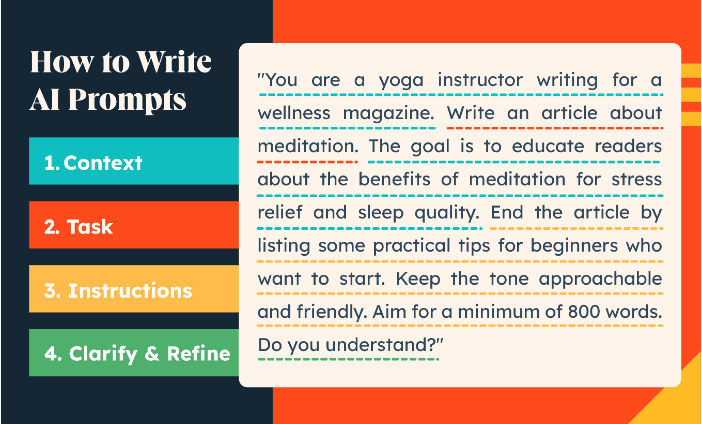
Encouraging Desired Responses
To influence the direction of the conversation, encourage ChatGPT to provide specific types of responses.
You can include phrases like "Tell me about..." or "What are some examples of..." in your open-ended prompts.
By subtly directing the conversation, you can guide ChatGPT to generate responses that fulfill your desired outcomes.
For example,
- "Tell me about some interesting historical events that happened on this day in history."
- "What are some examples of eco-friendly practices that businesses can adopt?"
Handling Ambiguous Queries
Open-ended prompts can sometimes result in ambiguous queries from ChatGPT.
It's important to anticipate this and provide additional context or instructions to clarify any ambiguity.
By addressing potential ambiguities, you ensure that ChatGPT understands the user's intent and generates relevant responses.
Remember, open-ended prompts offer greater flexibility and creativity, but they require careful crafting to obtain the desired outcomes.
Next, we will cover how to use the system, user and assistant instructions.
Using System, User, and Assistant Instructions
In addition to crafting prompts, you can further enhance the behavior and responses of ChatGPT by incorporating system, user, and assistant instructions.
These instructions provide guidance to the model and help shape the conversation.
Let's dive in and explore their role in ChatGPT prompt engineering.
Understanding the Importance of Instructions
Instructions play a vital role in guiding ChatGPT's behavior and response generation.
They provide explicit guidance to the model, allowing you to control the conversation's tone, style, and overall behavior.
You can shape the conversation by carefully crafting instructions to meet your desired outcomes.
Crafting System Instructions
System instructions are directives to the model that define its role and behavior.
They set the context for the conversation by specifying the role the AI should play. For example, you can instruct the system to behave like a helpful assistant, an expert, or playful companion.
Crafting clear and appropriate system instructions ensure ChatGPT's responses align with your intended persona and purpose.
Specifying the Role of the AI
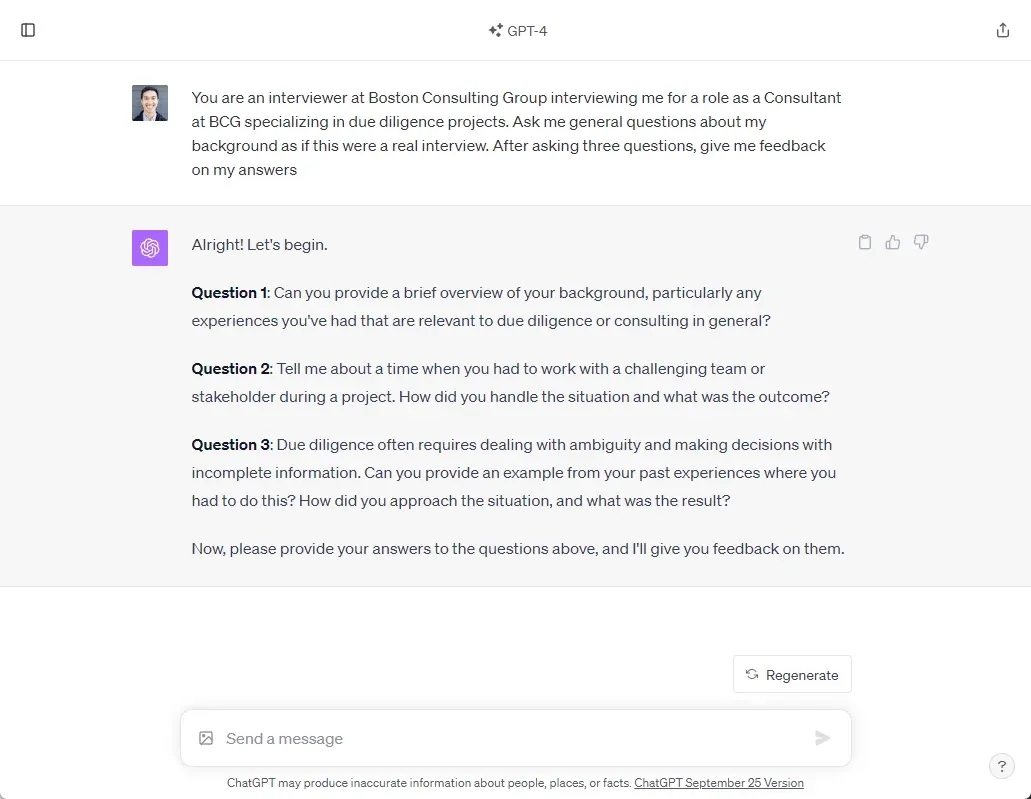
System instructions should specify the role you want ChatGPT to play in the conversation.
Whether you want it to provide factual information, offer creative suggestions, or engage in witty banter, clearly communicate these expectations in the system instructions.
This helps ChatGPT understand its role and generate responses that align with your desired outcomes.
Giving Hints or Suggestions
System instructions can also include hints or suggestions to guide the model's behavior and responses.
For instance, you can provide specific phrases or examples that ChatGPT should incorporate in its replies.
These hints or suggestions nudge ChatGPT in the desired direction, improving the quality and relevance of its responses.
Suggested Reading:
Leveraging User Instructions
User instructions allow you to incorporate user preferences and offer additional guidance to ChatGPT.
Let's explore how to use user instructions in your ChatGPT prompt engineering effectively.
Incorporating User Instructions Effectively
User instructions are an effective way to personalize the conversation and provide context to ChatGPT.
By incorporating user instructions, you can shape the responses based on specific preferences, requirements, or needs.
This enables ChatGPT to generate responses tailored to the user's unique circumstances.
Defining User Preferences
User instructions can specify user preferences or constraints within the conversation.
You can instruct ChatGPT to respect certain guidelines, preferences, or limitations when generating responses.
These instructions allow for a more personalized and user-centric conversation, enhancing the user experience.
Outlining Desired Outcomes
Clearly outline the desired outcomes or goals of the conversation in the user instructions.
This gives ChatGPT a clear understanding of what you expect from the conversation and helps it align its responses accordingly.
Outlining desired outcomes helps elicit more focused and relevant responses to your specific needs.
Restricting or Guiding Responses
User instructions can be used to restrict or guide ChatGPT's responses.
By providing specific guidance, you can direct ChatGPT to generate responses that adhere to certain guidelines or exhibit certain behaviors.
This allows for more controlled and purposeful conversations with ChatGPT.
Conclusion
Mastering ChatGPT prompt engineering is the key to unlocking ChatGPT's full potential.
You can guide the model to generate accurate, relevant responses aligned with your desired outcomes by carefully crafting prompts, instructions, and contextual cues.
This comprehensive guide equips you with the knowledge and best practices to become a ChatGPT prompt engineering expert and make the best use of your AI model.
Suggested Reading:
Frequently Asked Questions (FAQs)
What is prompt engineering and why is it important for beginners using ChatGPT?
ChatGPT Prompt engineering involves crafting specific instructions to guide ChatGPT's responses. Beginners need to ensure desired outputs and improve their overall experience with the model.
How can beginners effectively shape the prompts for optimal ChatGPT performance?
Beginners can optimize prompts by providing clear instructions, examples, and desired output format. Experimentation, iterating, and refining prompts based on model responses are key to improving performance.
What are some best practices for beginners in prompt engineering?
Beginners should start with simple prompts, use explicit instructions, provide specific context, and experiment with variations. It's important to learn from model feedback and refine prompts accordingly.
How can beginners maintain control over ChatGPT's responses through prompt engineering?
By carefully shaping prompts, beginners can influence the tone, style, and language of ChatGPT's responses. Iteratively refining prompts helps maintain control and produce more desirable outputs.
Are there any resources or tools available to assist beginners in prompt engineering?
Yes, beginners can use online resources, tutorials, and the OpenAI Cookbook's ChatGPTprompt engineering guide. Additionally, the OpenAI Playground and other interactive tools can aid in prompt experimentation and learning.


